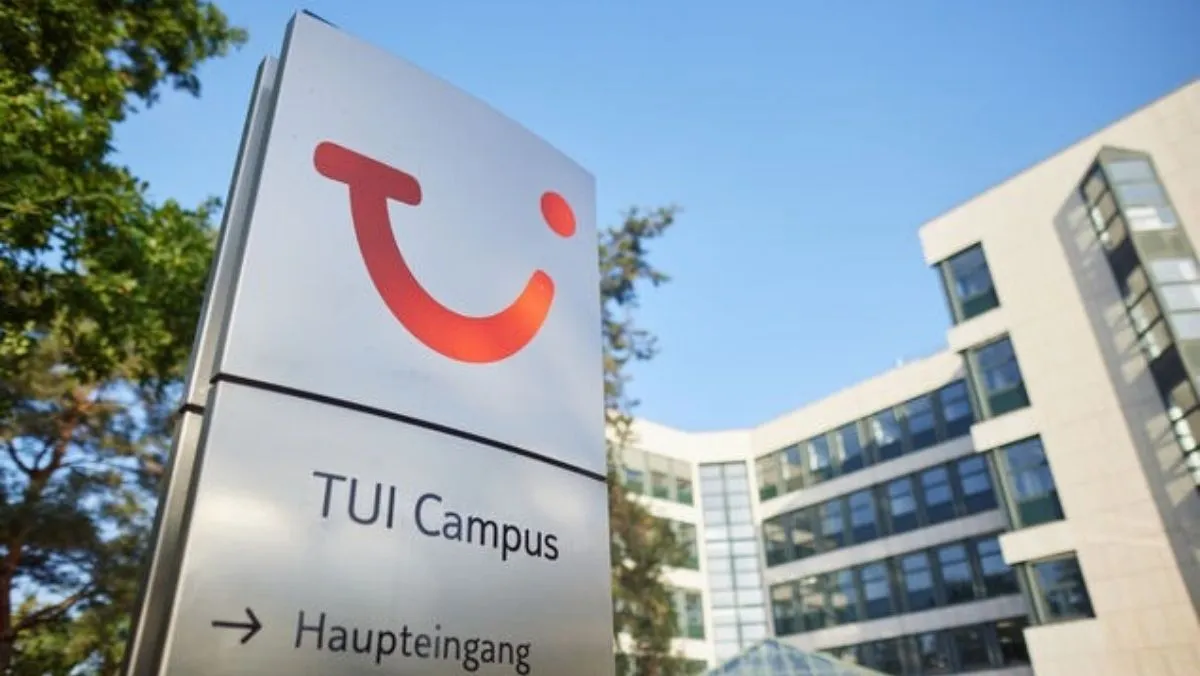Wednesday Dec 20 2023 10:02

9 min

TUI Group has seen its fair share of ups and downs. As one of the world’s largest leisure, travel, and tourism companies, the TUI share price often reflects the fortunes of its dominant industry.
This article will analyze the performance of the TUI share price over the past few years. You will learn about the significant events that triggered sharp rises and sudden plunges and speculate on the future of TUI shares.
Based in Germany, TUI Group owns travel agencies, airlines, hotels, cruise ships, retail stores and more. With sales over €19 billion, this tourism giant serves millions of customers across the globe. TUI emerged from the merger of Preussag AG and Thomson Travel Group in 2000. After various name changes and acquisitions, the newly christened TUI Group was born in 2007.
Today, it operates in over 100 countries and employs 70,000 people. By offering an integrated travel experience, TUI enjoys higher customer loyalty and repeat bookings.
TUI shares are listed on the London Stock Exchange and Frankfurt Stock Exchange under the ticker TUI. Here’s an overview of how the stock has traded:
TUI’s stock chart lines were turning upwards in the years leading up to 2018. Investor confidence reflected the company’s surging profits. As income levels rose, customers also craved more luxurious getaways. TUI captured this growing demand for mid-market package holidays.
The company’s integrated business model was proving successful. TUI hotels and planes fed guests to TUI cruises and resorts. This allowed optimized fleet and inventory management.
These synergistic effects let TUI lower prices and boost margins. With tourism booming, the company’s earnings and stock price climbed steadily from 2016 to 2018. In May 2018, the TUI share price hit an all-time high of £12.27, valuing the company at over £7.5 billion. Azure seas and blue skies lay ahead – or so investors hoped!
You might also like to read: How Do Shares CFDs Work? A Comprehensive Guide for Beginners

By early 2020, TUI remained prosperous. The company served over 20 million customers that year. Everything changed when COVID-19 swept the world, grounding TUI’s fleet virtually overnight. With infections spiralling, authorities banned nonessential travel. Hotels locked their doors, attractions shuttered, cruises docked indefinitely.
TUI suffered immense losses as bookings vanished. From April to May 2020, the group burnt through €740 million. With no revenue or relief in sight, TUI furloughed 11,000 UK employees.
Investors fled travel stocks amidst the uncertainty. The TUI share price fell, hitting an all-time low. The travel shutdown persisted through 2021. TUI shares stagnated under £300, weighed down by the rolling lockdowns. Battered by trip cancellations and refunds, TUI required multiple bailouts from the German government. This further eroded investor confidence. But the darkest days passed as vaccines allowed travel to restart in 2022.
Pent-up demand has rekindled travel bookings in 2022. Consumers still have savings and leave days to spare post-lockdowns. However, the sector’s recovery remains fragile. The war in Ukraine and record inflation have deteriorated consumer sentiment once again.
As Europe’s largest tourism company, TUI remains sensitive to external shocks. The TUI’s stock slid below £150 in June. The share price has regained some poise since hitting December lows under £120. Lingering COVID disruptions remain an issue, especially in the vital Chinese market.
TUI is forecasting a significant earnings recovery this year. Bookings for summer 2023 surged by 146% compared to last year. If COVID maintains its recent retreat, TUI’s operations could normalize over the next 12-18 months. That should release major cash flows to repair balance sheets.
Investor optimism may strengthen if inner confidence from management materializes into higher sales and margins. There seems to be plenty of open runways now for TUI’s stock to ascend after its epic crisis.
Check this interesting article: How to buy, sell and trade stocks

TUI AG currently has a market capitalization of £2.54 billion, with approximately 507.43 million shares in issue. Over the past year, TUI AG’s share price has experienced a significant range of fluctuations, trading between a high of 1,723.00 and a low of 131.75, with a difference of 1,591.25. This indicates that TUI AG’s stock has been subject to high volatility, which may be of interest to investors and analysts alike.
After enduring travel’s worst-ever shock, what does the future hold for the TUI share price? Near-term uncertainty lingers while high inflation and economic weakness suppress consumer spending.
Nonetheless, travel demand has proven surprisingly inelastic so far. Many customers still prioritize holidays and remain willing to pay higher prices. Global tourism is forecast to recover 1-2% in 2023, as per the UN World Tourism Organization.
Domestic and regional travel should rebound quicker than long-haul. Market leader TUI is well-placed to capture this initial demand growth. The group’s aggressive cost-cutting preserved ample liquidity to ride out further volatility. TUI is also investing to enhance competitiveness post-pandemic. It recently ordered new planes from Boeing. The company is accelerating its digital transition and improving customer experiences.
Dynamic packaging that offers personalized trip recommendations should raise repeat bookings and lifetime customer values. TUI also integrates sustainability across its business to align with shifting consumer priorities. Positioned to lead industry consolidation, TUI may also pursue acquisitions soon to expand market share.
Overall, by 2024-25, TUI could emerge larger yet leaner – making it a formidable player for the future. If global growth trends stabilize over the next decade, TUI can capitalize on large, underpenetrated markets like India and Africa.
Consider giving this a look: 5 stocks to look out for this new earnings season
This wraps up our dive into TUI share price over the past few years. We explored the highs and lows - from 2018’s peak to 2020’s during the COVID travel bans.
While risks still loom today, TUI is steering into calmer waters with travel demand rebounding. Its cost cuts and cash injections may pay off as tourists flock back. Still, investors should monitor consumer trends and financial results before buying TUI stock.
We hope this analysis gave you a clearer picture of the forces influencing this tourism leader. Keep an eye out for our next in-depth business profile!
Discover the benefits of markets.com: The ultimate trading community!
“When considering “CFDs” for trading and price predictions, remember that trading CFDs involves a significant risk and could result in capital loss. Past performance is not indicative of any future results. This information is provided for informative purposes only and should not be considered investment advice.”